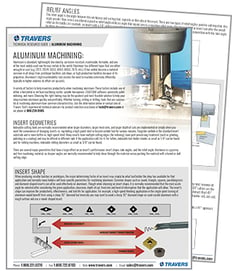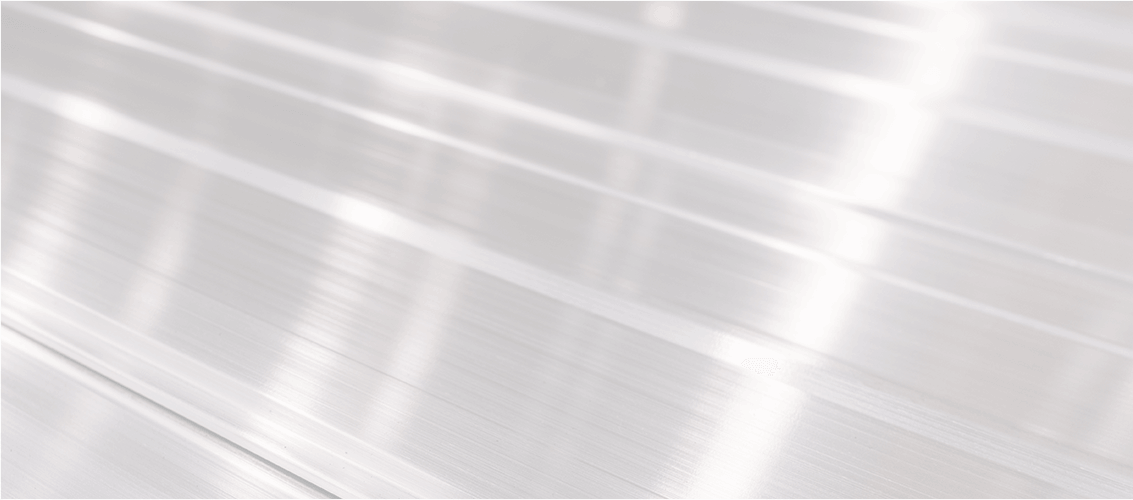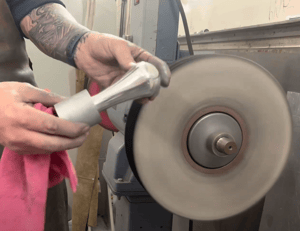How do you polish aluminum to a mirror finish? Watch our customer and skilled machinist, Dustin Maybin of Maybin's Concepts, demonstrate how you polish aluminum like a pro! Subscribe to our YouTube Channel and be the first to see more awesome videos like this one!
How To Polish Aluminum
Aluminium is a relatively soft, easy-to-machine metal, so it lends itself to a beautiful polish and mirror-like shine. Complete the following steps when polishing aluminum workpieces and materials.
Step 1: Clean The Aluminum
A coarse grit sandpaper can be used to remove heavy amounts of corrosion and dirt, and acts to level the surface of the aluminum. Using WD-40 (or a degreaser, or paint thinner) on the sandpaper, helps to remove debris and grease build up. Household applications may only require dish soap or a water and vinegar solution to clean the surface. A stainless steel wire brush can be used on heavily corroded aluminum surface. Post cleaning, the aluminum surface should be wiped down and dried, before proceeding with step two.
Step 2: Sand The Aluminum
If you are hoping to accomplish a mirror-like finish, sanding is key. Smaller aluminum pieces can definitely be done by hand with sandpaper, but larger projects will often require you use an abrasive with a power tool. Depending on the application, use of an orbital sander with PSA discs or an angle grinder with an aluminum grinding flap disc is most often recommended. Whenever sanding or grinding aluminum, avoid using the Aluminum Oxide abrasive material. Work your way up from a coarser grit abrasive (ie: 120-320 grit) depending on the severity of your project, up to finer grit abrasive (ie: 400-600 grit, even up to 1500 grit) until you have the deepest scratches or gouges sanded out. The smoother surface, the more light will reflect off the surface, giving it more of a shine and a mirror-like finish.
Step 3: Buff The Aluminum
Apply a small amount of the aluminum polish to the surface area of the aluminum. Wipe it into the surface by using small, circular motions. Using a clean cloth, or the unused side of the original cloth, wipe away all of the polish. Once all of the polish residue is gone, take another clean cloth and buff the entire surface using the same circular motions as earlier.
Add a bit of your coarsest abrasive buffing compound bar to your stiffest buffing wheel. Working in sections, buff the entire surface, adding more polishing compound as needed. Once completed, wipe off all of the compound's residue from the aluminum's surface, and change your buffing wheel.
Just like with sanding, start with the coarsest abrasive and work your way down. If using compound bars, start with a black emery cake or a brown tripoli aluminum abrasive compound before moving down to a finer grade as needed. Refer to the listing below.
POLISHING COMPOUNDS & THEIR USES
The following listing is arranged from the most coarse abrasive grade, to the finest abrasive grade.
BLACK EMERY CAKE:
- Used for preparing materials for polishing, more than the actual polishing process itself.
- Primarily used on aluminum or steel, but can also be used on sturdy metals like iron, pewter, nickel, brass, etc.
- Not recommended for soft, non-metallic materials.
BROWN, TRIPOLI ROUGE:
- One of the most widely used compounds for "cutting down" and bringing out a high luster on non-ferrous metals
- Primarily used on soft metals like copper, brass, and aluminum, as well as hard rubber, plastics.
- Not recommended for hard metals.
GREEN ROUGE:
- Works especially well on stainless steel but it can also be used on aluminum.
- Not recommended for precious metals or plastics.
WHITE ROUGE:
Primarily used for aluminum but can also be used on precious metals like gold and silver.- Not recommended to be used on hard materials.
- White rouge is a dry, fine grade, but not as fine as red rouge.
- Use on chromium, stainless steel, carbon steel, brass and aluminum to produce a clear, brilliant, mirror finish
RED ROUGE:
- Primarily for softer materials and precious metals.
- Red rouge a very fine grade and is dryer than the others, which produces a brighter finish.
WAnt to learn more about aluminum machining?
We believe the right tool is everything! Download our Aluminum Machining Guide and ensure you have the information you need to select the right tool for your aluminum machining applications, every time!
By downloading the Aluminum Machining Guide you'll also find information on:
- Milling approach angles
- Insert substrates, coatings & post treatment
- Insert shape and geometries
- Troubleshooting insert failure
- Pros & cons of solid carbide vs. indexable tooling
- How to choose the right tool for your aluminum milling application




